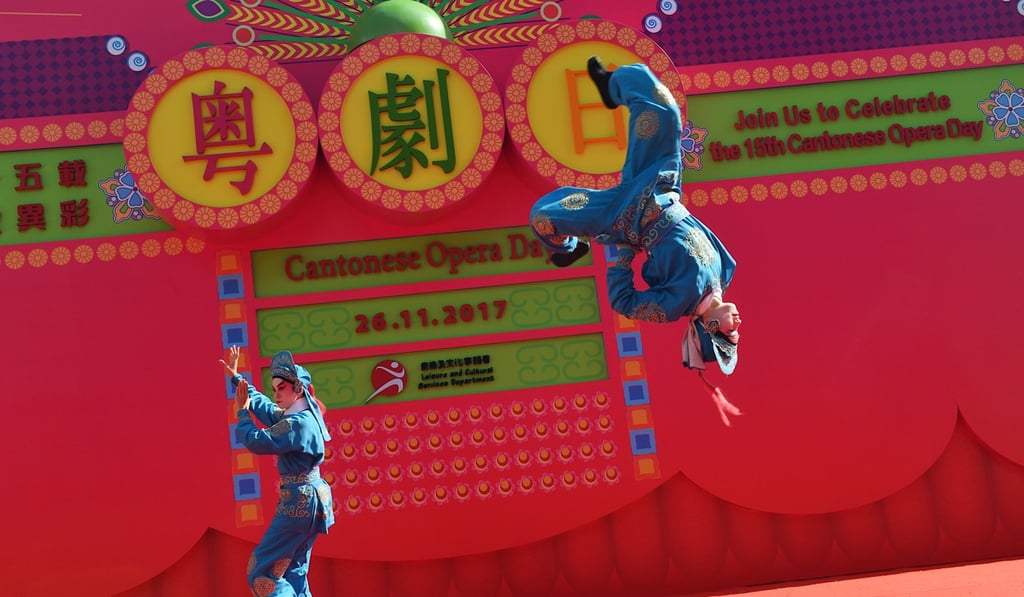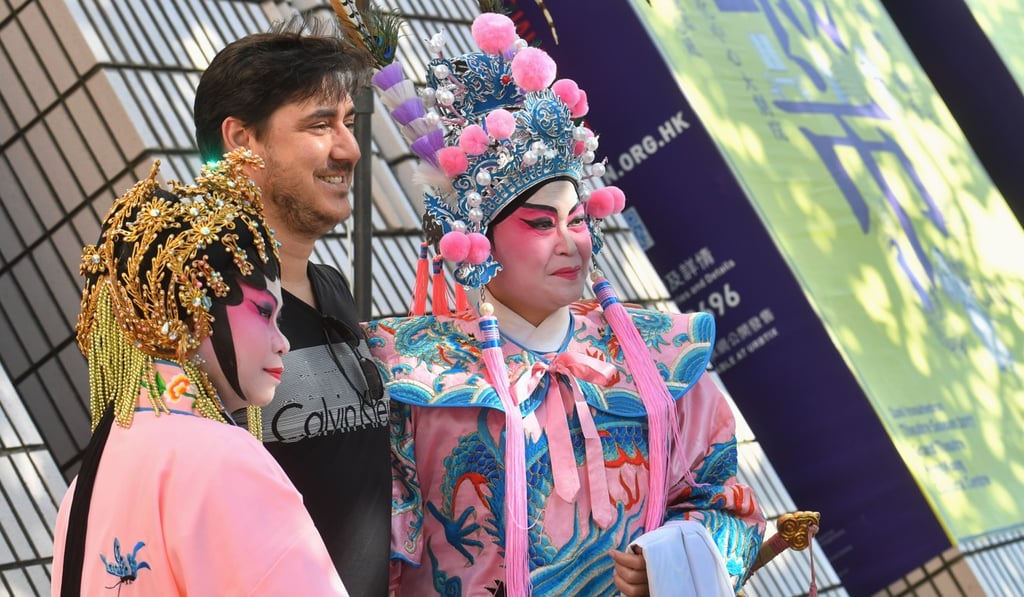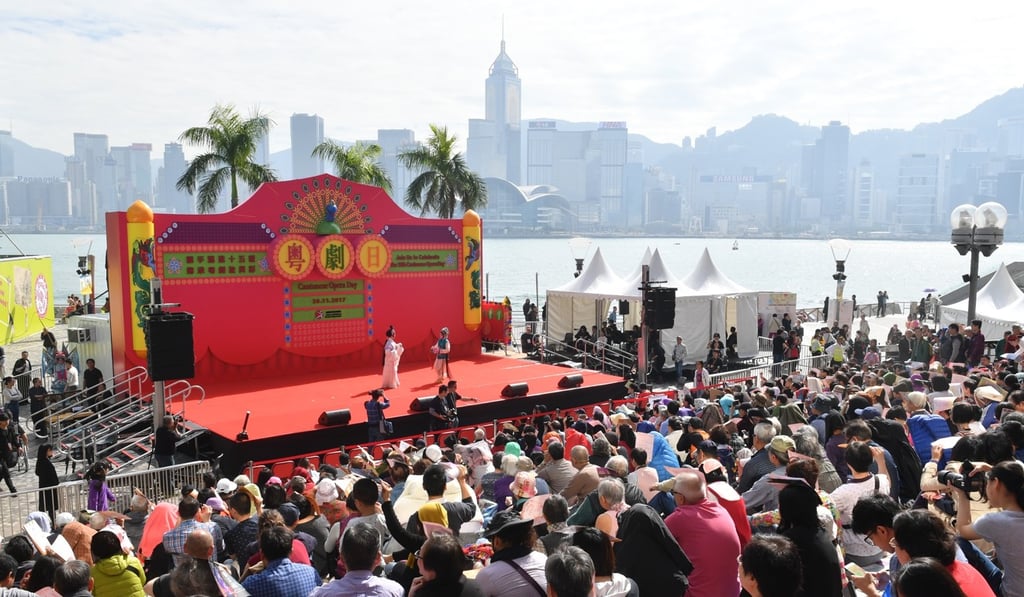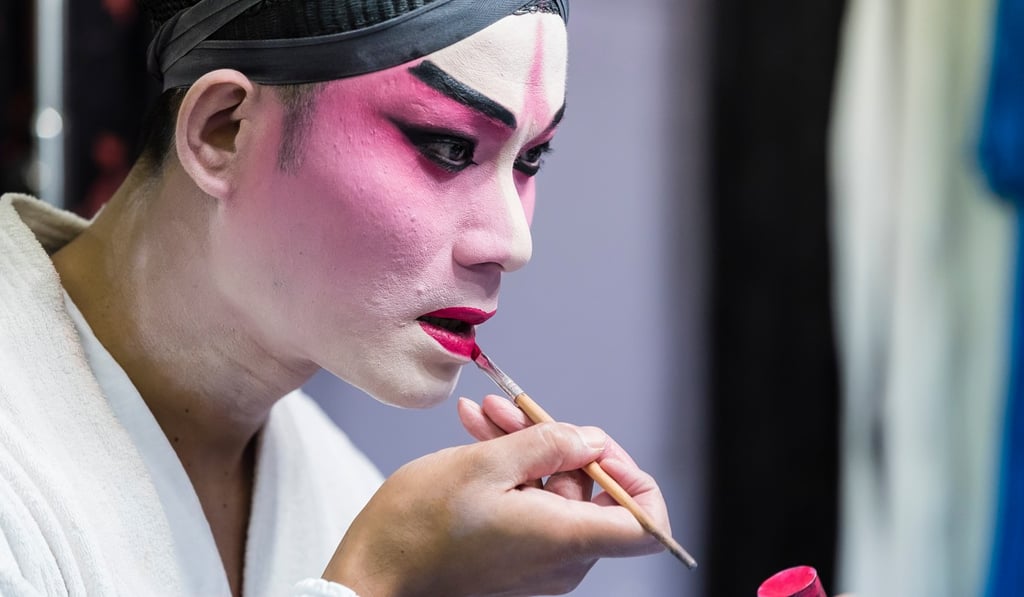Dispelling 5 common misconceptions about Cantonese opera
- Tradition of Cantonese opera is alive and well in Hong Kong
- Art form transcends cultural barriers and generations with stories of humanity

Cantonese opera – which originated in China’s southern region, notably Guangdong province, Hong Kong and Macau – remains one of the most celebrated forms of Chinese performance art today.
The elaborate stage shows performed in Cantonese, which combine singing, music, acrobatics and martial arts, continue to make Hong Kong proud.
We want to reach out [during Cantonese Opera Day] to people who have never had a chance to experience Cantonese opera
The 1,000-year-old art form’s unique aesthetics and long lineage led to Cantonese opera being inscribed onto the Unesco list of Intangible Cultural Heritage of Humanity in September 2009.
Despite Cantonese opera’s long history and prestigious status, there are many misconceptions that stop it from being more widely appreciated.
However, this year’s forthcoming Cantonese Opera Day, on November 25, promises to change that, veteran Cantonese opera star Sun Kim-long says.
“We want to reach out to people who have never had a chance to experience Cantonese opera,” he says.

Sun is in charge of organising the opening ceremony at the annual event presented by Hong Kong’s Leisure and Cultural Services Department, which returns for the 16th edition at the Hong Kong Cultural Centre.
“Cantonese Opera Day is like a carnival,” Sun says.
“By immersing themselves in the world of Cantonese opera, everyone is capable of appreciating the art form, even if they don’t speak the language.”
So, what are the big misconceptions about Cantonese opera?
1. It’s too long and boring
A full Cantonese opera performance can certainly last for many hours, but one is not required to sit through the entire show to appreciate the art form.
A lot of the time excerpts are performed.
By immersing themselves in the world of Cantonese opera, everyone is capable of appreciating the art form, even if they don’t speak the language
The Cantonese Opera Day will be a great opportunity to experience the art form, says Sun, as visitors can go in and out of much shorter performances of excerpts and operatic songs that are highlights of the essence of the art form.
Excerpts from the most celebrated titles will be performed at the Cultural Centre’s piazza during the day.
The selection will feature a mix of romance, comedy, action and drama, including First Encounter from The Legend of the Purple Hairpin performed by students of the Cantonese Opera Academy Hong Kong.
The Hong Kong Young Talent Opera Troupe will stage The Meeting in the Flower Fields from A Comedy of Errors in the Flower Fields, and Ten Goodbyes at Dongting Lake.

The foyer of the Cultural Centre will be used as the stage for operatic songs throughout Cantonese Opera Day, creating a free and relaxing environment that will allow visitors to sample the music of the art form at their leisure.
2. I won’t ‘get it’ if I don’t speak Cantonese
Does one need to speak Italian to understand Western opera?
The answer is obviously no.
Although knowing the language definitely helps understand Cantonese opera, one can still enjoy the art form through other non-verbal languages, Sun says.
On Cantonese Opera Day, free workshops on music appreciation, singing techniques, make-up and costume demonstrations will be staged to help participants appreciate the art form from various perspectives.

In addition, Cantonese opera requires the audience’s wild imagination as body movements are not necessarily literal.
These movements are in fact unspoken languages telling the audience a lot of information about the plot, from the war and fight scenes to the psychological state of a character.
Dr Kitty Tai Suk-yan, a member of the Cantonese Opera Development Fund Advisory Committee, has written that the audience should pay attention to the bodily movements of the performers, such as their hand and body gestures, eye expressions and footwork.
She also said abstract movements, such as going up and down a staircase, or opening and closing doors are in fact telling the audience that the characters or the plot are moving into different times and spaces
Guided tours in English and Mandarin are also on the offer during Cantonese Opera Day.
“We hope to introduce Cantonese opera to people who do not speak Cantonese as a form of cultural exchange and promotion of our cultural heritage,” Sun says.
3. It’s only for older people
This view is a common misconception.
The results of the latest Arts Participation and Consumption Survey, carried out by the Arts Development Council, show 66 per cent of those people who have not been taking part in any activities relating to Chinese opera, including Cantonese opera, stated that the art form was only for elderly people.
Yet this is not entirely true: it is an art form that can be enjoyed and appreciated by young people and children, too.
Sun says children and young people will be taking on starring roles at the forthcoming Cantonese Opera Day, with the event now firmly established as a family event, with parents bringing their children along to experience the art form.
The young Cantonese opera enthusiasts will be singing at the opening ceremony.
Operatic songs will be performed by student winners of the Cantonese opera category at the 70th Hong Kong Schools Music Festival.
“Some of the students have also demonstrated their potential to become artists in future,” Sun says.
4. No one goes to Cantonese opera shows any more
Contrary to common belief, statistics show Cantonese opera is among the most vibrant forms of entertainment in Hong Kong.
The Arts Development Council’s survey showed that the number of Chinese opera programmes, including Cantonese opera, has been on the rise over the past five years – from 1,129 in 2011-12 to 1,568 in 2015-16 – even higher than the number of variety or pop shows, which featured in 1,567 programmes in 2015-16.

The attendances at Chinese opera programmes were the highest among all performing arts, reaching 997,000 in 2015-16, which generated a total box office of HK$84 million (US$10.7 million).
5. It is irrelevant to our lives today
Cantonese opera certainly has a long history, with many of the stories set in historical times, and the lines often written in poetic or sometimes classical Chinese language.
However, despite all these historic elements, the themes of the stories are still relevant today.

Many of the stories are about values and virtues that are important reminders of humanity in turbulent times in which we are now living.
The Legend of the Purple Hairpin, for example, is widely seen as a romantic classic, but the story is essentially about loyalty, upholding promises and abiding by moral principles.
An excerpt from The Revenge Battle, to be performed by Sunny Cantonese Opera Troupe, is a story about the importance of resolving conflicts and misunderstandings, even if it means having to pay a hefty price.